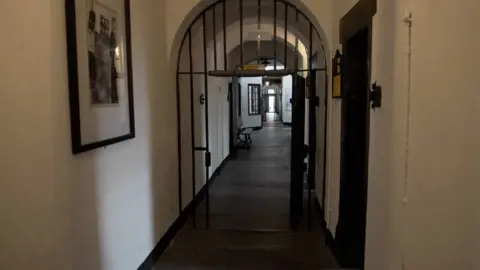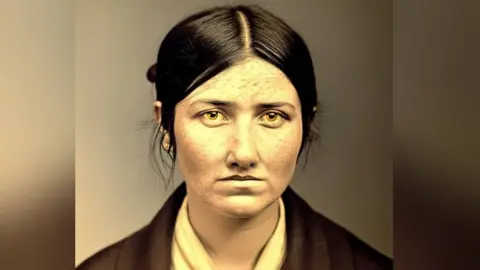Developer Offer
Try ImaginePro API with 50 Free Credits
Build and ship AI-powered visuals with Midjourney, Flux, and more — free credits refresh every month.
AI Recreates Faces of 19th Century Welsh Convicts
A Glimpse into the Past Through AI
In a fascinating blend of history and cutting-edge technology, researchers are now able to generate lifelike portraits of Welsh convicts who were sent to Australia during the 19th Century. Using Artificial Intelligence (AI), a dedicated team of volunteers and researchers has brought to life the potential faces of 60 criminals deported from Anglesey, Wales, for offenses that could be as minor as stealing a handkerchief.
The innovative process combines detailed historical data to build a comprehensive profile for the AI. The team utilized detailed prisoner records from the era, historical sketches, and, in a unique modern twist, photographs of the prisoners' living descendants to inform the final renderings. This allows us to look into the eyes of individuals whose stories were nearly lost to time.
 An AI rendition of what John Hughes may have looked like, based on a combination of prisoner records, historical records and photos of descendants
An AI rendition of what John Hughes may have looked like, based on a combination of prisoner records, historical records and photos of descendants
The Harsh Reality of 19th Century Justice
The project sheds light on the severe justice system of the time. While most convicts were found guilty of theft, often as repeat offenders, some were deported for incredibly petty crimes, such as trampling on the turnips of the local aristocracy.
Roger Vincent, a volunteer guide at Beaumaris Gaol on Anglesey, began the research after a holiday to Australia sparked his curiosity about the historical ties between the two nations. His archival research uncovered the stories of the 60 Anglesey islanders who were transported. Some of the disproportionate sentences included:
- John Hughes: Stole a handkerchief and glass, given 10 years – deported.
- Hugh Hughes: Stole five sheep, life sentence – deported.
- William Williams: Stole 29 shillings from a boy, seven years – deported.
 Beaumaris Gaol was in operation for just under 50 years in the 19th Century
Beaumaris Gaol was in operation for just under 50 years in the 19th Century
From Wales to Van Diemen's Land
During this period, an estimated 162,000 convicts were sent to Australia, with at least 1,000 originating from Wales. This policy of transportation served three main purposes for the British government: it eased overcrowding in UK and Irish prisons, it was a cheaper alternative to long-term incarceration, and it supplied the manual labor needed in the Australian colonies.
Among those transported was John Frost, a notable leader of the Chartist movement and the Newport Rising. He was initially sentenced to death before his punishment was reduced to transportation to Van Diemen's Land, the name for Tasmania at the time.
A Legacy Reclaimed: From Shame to Pride
The perception of convict ancestry has dramatically shifted over the years. According to Prof Hamish Maxwell-Stewart, an expert in convict life, what was once considered a "badge of shame" has transformed into a point of pride. "Increasingly – and I think especially Tasmanians – are proud that they've had a convict in the past," he said.
This heritage is a significant part of the national identity, as an estimated 20% of all Australians are descendants of convicts, a figure that rises to nearly 70% in Tasmania.
 An AI generated image of Ann Williams, who was deported from Wales to Tasmania in 1842 for stealing
An AI generated image of Ann Williams, who was deported from Wales to Tasmania in 1842 for stealing
This sentiment is shared by people like Caterina Giannetti, a Sydney resident and direct descendant of Ann Williams, who was transported from north Wales in 1842 for stealing. "It's really fascinating to know where you've come from," she explains. "It's almost a badge of honour for an Australian to have a convict in their line."
Compare Plans & Pricing
Find the plan that matches your workload and unlock full access to ImaginePro.
| Plan | Price | Highlights |
|---|---|---|
| Standard | $8 / month |
|
| Premium | $20 / month |
|
Need custom terms? Talk to us to tailor credits, rate limits, or deployment options.
View All Pricing Details

